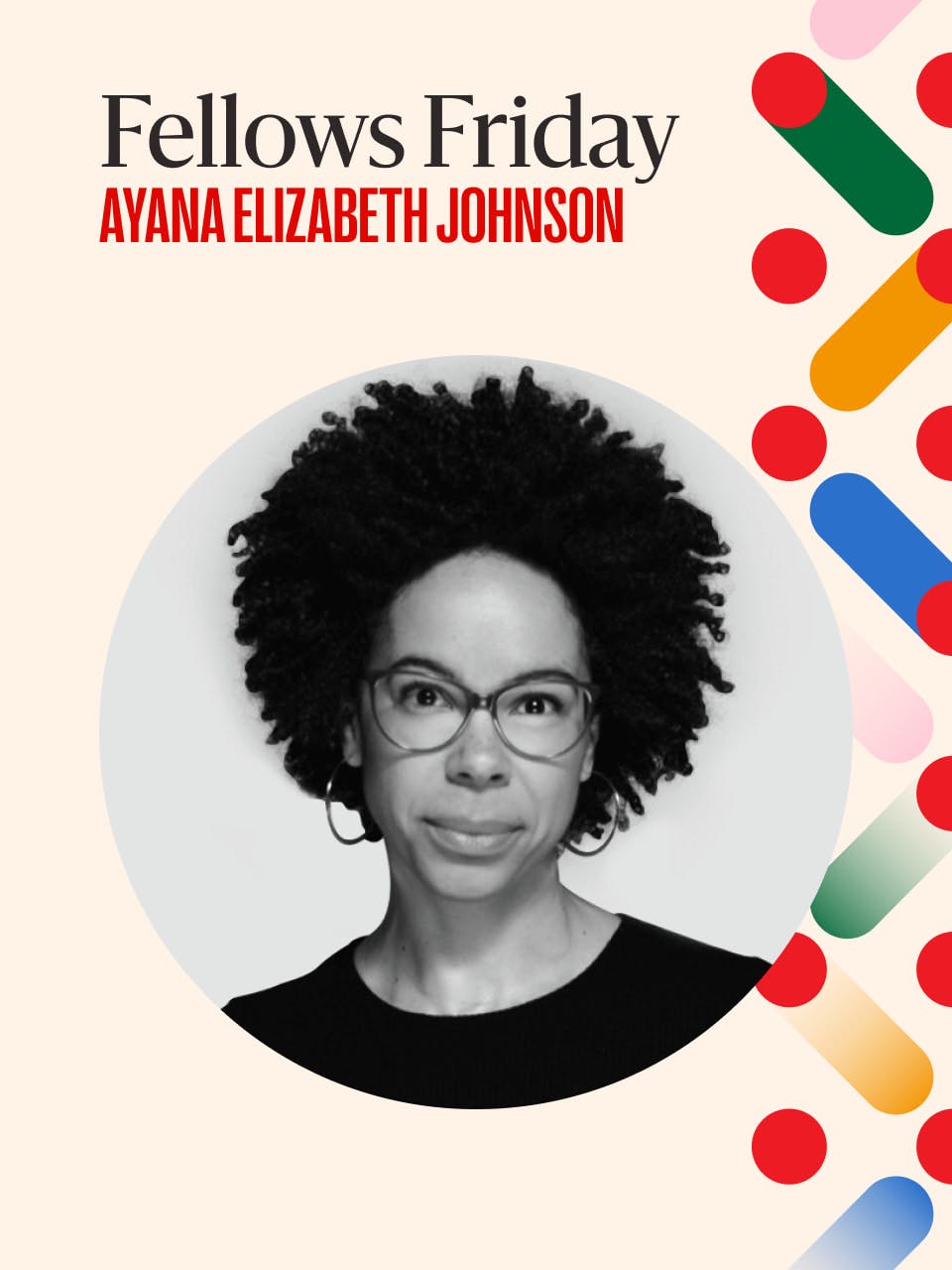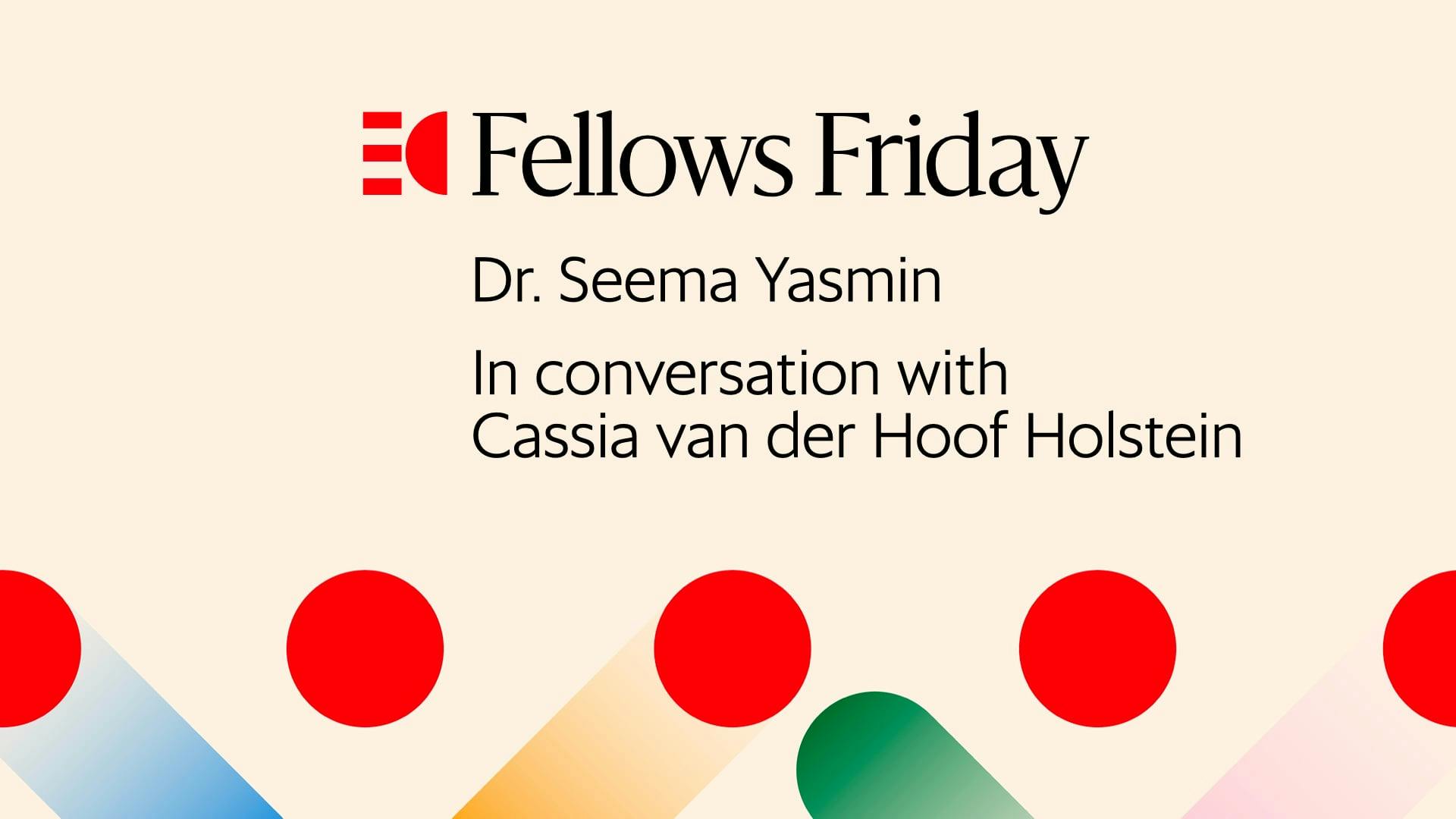
A new anthology highlights the diverse women leading the climate movement
60 min watch

FELLOWS FRIDAY SERIES: Physician, journalist, and epidemiologist Dr. Seema Yasmin shares strategies for addressing misinformation and disinformation about COVID-19.
Examining the U.S. response to pandemics like COVID-19, Dr. Seema Yasmin observes that one crucial consideration is often missing from public health efforts: The information environment in which people live. “Everything in your epidemic or pandemic plan can fall apart if you don’t have a plan for communication,” she says.
Trained as a doctor and epidemiologist, Yasmin served as an Epidemic Intelligence Service officer at the Centers for Disease Control, where she investigated disease outbreaks and witnessed firsthand the way viral misinformation and disinformation spread, in tandem with pathogens. She was inspired to train in journalism to communicate more effectively about disease outbreaks—and how to prevent them.
Her new book, Viral BS: Medical Myths and Why We Fall for Them, develops this theme, exploring the role of misinformation and disinformation in “misinfodemics.” Six years in the making, the book covers a phenomenon that has been around for centuries. It is particularly germane today, as the collapse of local news, the rise of social media, and a host of other forces around society's relationship to truth threaten to undermine efforts to halt the spread of COVID-19 and to rapidly deploy a vaccine.
As a member of the Recover and Renew Cohort of Emerson Collective Fellows, Yasmin is also undertaking a novel study of “double deserts”: Communities that are both medical deserts, lacking access to care, and news deserts, lacking access to local journalism. Her thesis is that local journalism can be the “immune system of a democracy,” deploying “intellectual antibodies” to combat the contagion of medical falsehoods.
Yasmin recently joined us for Fellows Friday, in conversation with Cassia van der Hoof Holstein from Emerson Collective’s Global Health Equity practice. They discussed misinformation and disinformation in the pandemic context, as well as effective communications strategies to save lives and flatten the curve.
I came to the U.S. 10 years ago to serve in the Epidemic Intelligence Service, and that is when I really had the aha moment. You get sent to different places where there are epidemics and your sole focus, you’re told, is to “Stop the contagion”—a virus, bacteria, fungus, whatever.
I kept being sent to different places with different pathogens each time, but there was always something very similar, which is that it’s never just a disease that’s spreading. It’s always misinformation, and disinformation, and medical myths, too. That information is contagious, as well. It felt like, in public health, we were like, “Communication? Deal with the science!” But communication is a science, too, and actually everything in your epidemic or pandemic plan can fall apart if you don’t have a plan for communication. And we’re seeing that now, I think, with the vaccine—people haven’t been given that information.
What I’m trying to quantitatively and qualitatively address through my research is communities who are vulnerable to the spread of disease because of a lack of care, infrastructure, and a healthy built environment, yet are also disproportionately vulnerable to the spread of misinformation and disinformation, because they’ve lost their local newspapers. A lot of work has been done in the comms field about the impact on a community when it loses its local newspaper. This has been studied really, really well. We know it’s bad for governance and democracy to lose newspapers, so surely it’s having an impact on our health, too.
The development of communications efforts and campaigns absolutely has to happen in collaboration with the communities that you hope to serve with those messages.
I think we have to be really careful and try not to have a top-down, trickle-down approach. The development of communications efforts and campaigns absolutely has to happen in collaboration with the communities that you hope to serve with those messages. I’m talking about community-based interventions. Yes—we should have national, cohesive strategies for the pandemic and for communications. But then, communications really need to be hyper-localized, and if you’re going to do that effectively, then you’d better talk to the imams, rabbis—whichever health advocacy organizations at the community level are already connected to their communities. They look like the people that they serve and that they work with, and I think that’s what can lead to successful communication.
It’s not enough to just say, “We’ll put you at the front of the line now”—if that's even happening—or, “You should trust us.” There are historical and also, recent reasons why people would not trust somebody in a white coat. It goes beyond Tuskegee. I just don’t see how you can expect people to roll up their sleeves and get vaccinated with a very new vaccine when our professions—medicine, science, public health—have not acknowledged or atoned for the very history of our disciplines. For instance, we still name the medical school buildings and surgical equipment after men who were eugenicists. Cells of our body are named after these fascists who believed awful things about Black and brown people and women, about the sizes of our brains compared to White people.
Putting my journalism hat on, I think what we’re starting to see in some outlets, like National Geographic and the Los Angeles Times, is the beginning of the process of these outlets saying: “We acknowledge our role in White supremacy. Here’s how we covered lynchings. Here’s how we covered other atrocious events.” That’s the very bare minimum—and we haven't really seen this reckoning in science and medicine and public health. I don’t know how we expect to build bridges and gain people’s trust. It’s not an action that those individuals owe us. It’s a thing that we have to do from a position of literal power over human bodies when people are in the most vulnerable situations in their lives.
The advice that I would offer, first off, is: Have those conversations. There are studies that show that individuals who had been exposed online to false information about vaccines—not just COVID but vaccines in general—who took it offline and into a conversation with friends or family were more protected. More immune, if you like, from being duped by the false information.
Then, I think you have to make sure you’re doing your research and finding out the context around the vaccines. For example, people have said to me, “Well, you’ve reported on vaccines for a long time and you’re always saying that the average time taken for vaccine development is 10 years. Why should I trust something developed in 10 months?’ I think that’s a fair question, and it’s such a shame that everyone hasn’t been given the right context. People don’t have the context that there were scientists who—for years, some up to a decade—were working on vaccines for situations just like this—for disease X or pandemic X—so that they could be nine steps ahead when a new pathogen emerged.
I was saying, really early on, that—because of the concerted global effort, because of the level of financial support that there’s been—we would likely develop a vaccine within a year. But the whole thing about a vaccine is that a vaccine in a vial won’t end a pandemic. It’s a vaccine given to people that ends a pandemic. And that last mile of distributing and then administering the vaccines sometimes falls apart because of communication. We practice evidence-based medicine; why do we not practice evidence-based health and science communication? The data are there about which techniques work and which don’t, but we just love to keep falling back on historical—but deficient—methods of health and science communication.